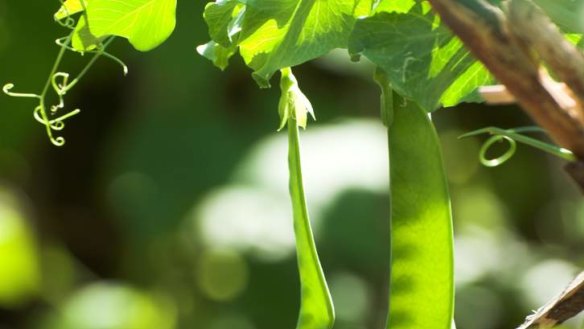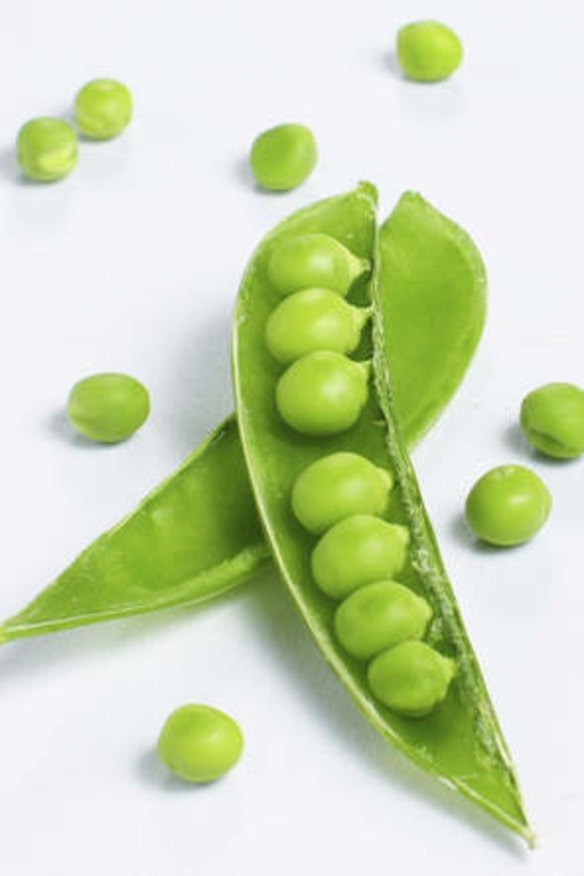May day for perfect peas

May is a time for reflection about what has worked and what hasn't in the garden this year.
Sometimes I have been persuaded to try what appeared at the time to be a radical idea and sometimes such experiments have produced good results.
Fanny Lobry spent two months as a Woofer (Willing Workers on Organic Farms) with us last spring, when the fruit trees were bursting into blossom and setting fruit, and the vegetables racing skywards as the days and nights warmed. She spent many hours thinning fruit, weeding around the vegetables and tying up the young tomato plants.

She was very keen on snowpeas, even to the point of continuing to plant out seeds each three weeks into the middle of summer. Succession planting gives you a supply for months.
We experienced some of the hottest days on record in January and February and many fruits were scorched by the sun, but amazingly, those little snowpea plants survived.
Peas prefer cooler times of the year, but if you can provide shade from the hot afternoon sun and lay down a good supply of sugar cane or lucerne mulch to keep the soil cool and moist, summer plantings can make it through. We picked a handsome crop in early April.
Lobry is visiting her family in France, then will return to work at the Boathouse restaurant.
As with many other vegetables, peas grow best in a well-drained garden beds moderately rich in humus. As they produce their own supplies of nitrogen, they can be grown after a gross-feeder crop, such as a leafy crop.
Don't grow winter peas in a bed that has just grown summer beans because pests attack both types of plants.
Dwarf-pea varieties support themselves but where there is the prospect of a good growing season, a trellis will help, allowing more flowers and good air circulation. You need to set aside a reasonable amount of space.
Sow seeds to a depth of three to four centimetres at this time of the year. If you continue to plant into spring when the soil is warming, plant a little deeper. Leave about seven centimetres between each seed and 90 centimetres between rows.
Peas are quite a quick-growing vegetable in over winter, with the chance of a first harvest after 10 weeks. Late winter can be problematic as heavy frosts can hit the white flowers setting into pods. The harvest will last up to four weeks.
You can eat snowpeas and sugar snap peas as the whole pod. By growing them in your home garden, you can pick and cook within an hour to prevent the sugars from turning into starch.
When the peas are all picked and the plants begin to die off, cut them up to produce wonderful pea straw mulch for other vegetable crops. Cut off the plants at ground level and leave the roots in the garden bed so the nitrogen is released back into the soil.
Good snowpea varieties are Oregon sugar and the mammoth melting. Oregon sugar is a disease-resistant bush-type plant that is disease resistant and produces pods 10 centimetres to 11 centimetres long. The plants will crop very well and the pods are crisp, tender and full of flavour. Mammoth melting is a heirloom variety. It is a vigorous climber so will need a trellis. Sugar Ann is perhaps the sweetest of the sugarsnap peas, taking two months to produce a harvest.
The bush-type plants will grow 60 centimetres high. It is very productive. The cascadia sugarsnap is a climbing pea, with the plants growing more than one-metre high. The peas are sweet and delicious.
Massey gem and greenfeast are the two main bush shelling type peas, both disease resistant with a longer harvest than others. Telephone is a heritage-climbing variety.
Owen Pidgeon runs the Loriendale Organic Orchard near Hall.
This week
■ Set up netting over newly planted beds of garlic and peas to stop birds breaking off the new shoots.
■ Check to see whether the emerging roots of your garlic are pushing the cloves above the surface of the garden bed. If so, cover with more soil or dig a small hole and set them a little below the surface.
■ Extend the harvest time for late-season salad greens by covering them with a low-level cloche made of plastic over bent wires or netting.
■ Begin pruning nectarine and peach trees as soon as the leaves have begun to fall.
■ Check on your drying pumpkins - they need a dry, sunny location. Rotate the position of the fruit touching the ground or surface to avoid moisture and consequent rot setting in.